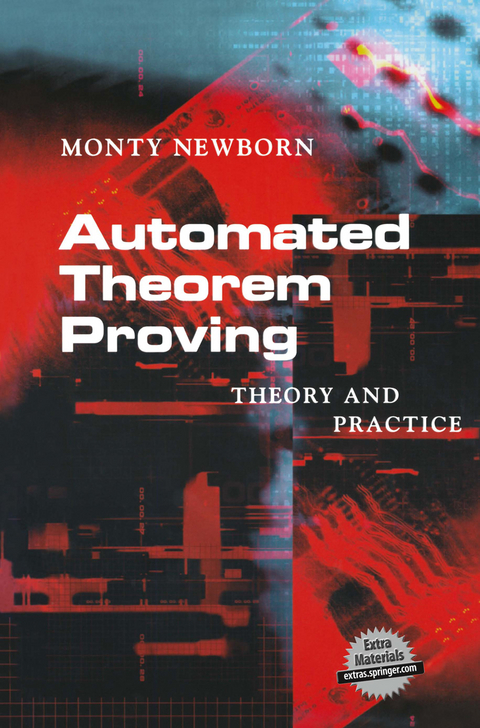
Automated Theorem Proving
Theory and Practice
Seiten
2013
|
Softcover reprint of the original 1st ed. 2001
Springer-Verlag New York Inc.
978-1-4612-6519-1 (ISBN)
Springer-Verlag New York Inc.
978-1-4612-6519-1 (ISBN)
The first four chapters contain introductory material about automated theorem proving and the two programs. Chapter 5 presents the theoretical foundations of seman tic tree theorem proving as performed by HERBY. Chapter 6 presents the theoretical foundations of resolution-refutation theorem proving as per formed by THEO.
As the 21st century begins, the power of our magical new tool and partner, the computer, is increasing at an astonishing rate. Computers that perform billions of operations per second are now commonplace. Multiprocessors with thousands of little computers - relatively little! -can now carry out parallel computations and solve problems in seconds that only a few years ago took days or months. Chess-playing programs are on an even footing with the world's best players. IBM's Deep Blue defeated world champion Garry Kasparov in a match several years ago. Increasingly computers are expected to be more intelligent, to reason, to be able to draw conclusions from given facts, or abstractly, to prove theorems-the subject of this book. Specifically, this book is about two theorem-proving programs, THEO and HERBY. The first four chapters contain introductory material about automated theorem proving and the two programs. This includes material on the language used to express theorems, predicate calculus, and the rules of inference. This also includes a description of a third program included with this package, called COMPILE. As described in Chapter 3, COMPILE transforms predicate calculus expressions into clause form as required by HERBY and THEO. Chapter 5 presents the theoretical foundations of seman tic tree theorem proving as performed by HERBY. Chapter 6 presents the theoretical foundations of resolution-refutation theorem proving as per formed by THEO. Chapters 7 and 8 describe HERBY and how to use it.
As the 21st century begins, the power of our magical new tool and partner, the computer, is increasing at an astonishing rate. Computers that perform billions of operations per second are now commonplace. Multiprocessors with thousands of little computers - relatively little! -can now carry out parallel computations and solve problems in seconds that only a few years ago took days or months. Chess-playing programs are on an even footing with the world's best players. IBM's Deep Blue defeated world champion Garry Kasparov in a match several years ago. Increasingly computers are expected to be more intelligent, to reason, to be able to draw conclusions from given facts, or abstractly, to prove theorems-the subject of this book. Specifically, this book is about two theorem-proving programs, THEO and HERBY. The first four chapters contain introductory material about automated theorem proving and the two programs. This includes material on the language used to express theorems, predicate calculus, and the rules of inference. This also includes a description of a third program included with this package, called COMPILE. As described in Chapter 3, COMPILE transforms predicate calculus expressions into clause form as required by HERBY and THEO. Chapter 5 presents the theoretical foundations of seman tic tree theorem proving as performed by HERBY. Chapter 6 presents the theoretical foundations of resolution-refutation theorem proving as per formed by THEO. Chapters 7 and 8 describe HERBY and how to use it.
A brief introduction to COMPILE, HERBY and THEO.- Predicate calculus, well-formed formulas and theorems.- COMPILE: transforming well-formed formulas to clauses.- Inference procedures.- Proving theorems by constructing closed semantic trees.- Resolution-refutation proofs.- HERBY: A semantic tree theorem prover.- Using HERBY.- THEO: A resolution-refutation theorem prover.- Using THEO.- A look at HERBY's source code.- A look at THEO's source code.- Other theorem provers.- References.
| Zusatzinfo | XIV, 231 p. |
|---|---|
| Verlagsort | New York, NY |
| Sprache | englisch |
| Maße | 155 x 235 mm |
| Themenwelt | Informatik ► Theorie / Studium ► Künstliche Intelligenz / Robotik |
| Mathematik / Informatik ► Mathematik ► Allgemeines / Lexika | |
| Mathematik / Informatik ► Mathematik ► Logik / Mengenlehre | |
| ISBN-10 | 1-4612-6519-3 / 1461265193 |
| ISBN-13 | 978-1-4612-6519-1 / 9781461265191 |
| Zustand | Neuware |
| Haben Sie eine Frage zum Produkt? |
Mehr entdecken
aus dem Bereich
aus dem Bereich
Buch | Softcover (2024)
REDLINE (Verlag)
CHF 27,95
Eine kurze Geschichte der Informationsnetzwerke von der Steinzeit bis …
Buch | Hardcover (2024)
Penguin (Verlag)
CHF 39,20


